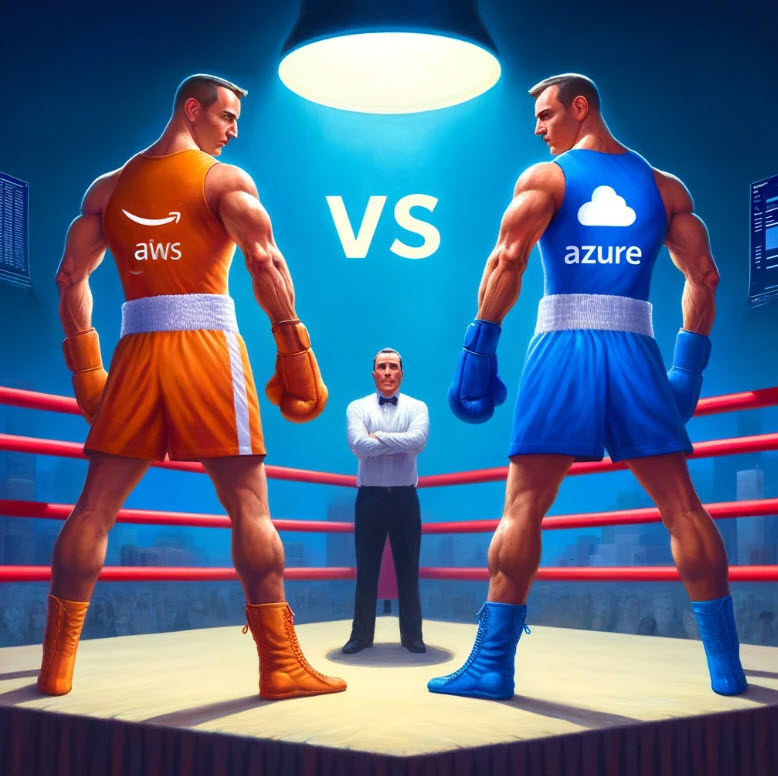In the evolving realm of cloud data integration services AWS Glue and Azure Data Factory (ADF) shine as solutions offered by Amazon Web Services and Microsoft Azure.
These platforms streamline the process of integrating data making it easier for businesses to prepare and upload their data for analysis. AWS Glue is an ETL service that automates data preparation and organization using an Apache Spark environment. On the other hand- Azure Data Factory is a centric data integration service that simplifies the creation, timing and coordination of data workflows.
Data Integration and Accessibility
AWS Glue primarily integrates well within the AWS ecosystem, offering native support for AWS services such as Amazon S3, Amazon RDS, Amazon Redshift, and Amazon DynamoDB. For accessing data from non-AWS sources, AWS Glue can connect to any JDBC-compliant database or any data source supported by Spark, as it uses Spark and Python underneath. This includes databases like MySQL, PostgreSQL, and even databases hosted on non-AWS cloud platforms, provided you can establish the necessary network connectivity. Point: AWS Glue for integration with the AWS ecosystem.
However, AWS Glue may not offer as seamless an integration with third-party services and on-premises data sources as Azure Data Factory, which has extensive built-in connectors and integration runtime capabilities designed specifically for a broad range of environments and scenarios, including SaaS applications and on-premises data systems.
AWS Glue can be extended through custom connectors or by using AWS Lambda to perform transformations or integrations that aren't natively supported. This means while AWS Glue has capabilities to interact with third-party sources, it might require additional setup or custom development, unlike Azure Data Factory where broader connectivity is a built-in feature. Point: Azure Data Factory for easier & versatile data source integration.

Data Visualization Capabilities
AWS Glue can be easily linked with Amazon QuickSight for visualization purposes allowing users to view and analyze data directly from the ETL platform.
AWS Glue is designed to integrate with Amazon QuickSight offering a data visualization process that allows for real time insights, as data undergoes processing and transformation within workflows. Point: AWS Glue for integration with Amazon QuickSight
Azure Data Factory is known for its integration capabilities with Microsoft Power BI enabling users to create data pipelines effortlessly using a drag and drop interface. This empowers a range of users to handle data transformations without requiring extensive coding knowledge. Point: Azure Data Factory for integration with Microsoft Power BI
Ease of Use and User Empowerment
In terms of ease of use and user empowerment AWS Glue simplifies ETL management by providing a managed service that reduces setup and maintenance. With tools like Glue Studio users can easily create, run and monitor ETL jobs through an interface. Point: AWS Glue for simplified ETL management.
On the other hand- Azure Data Factory offers visual tools that make it easy for users to build data integration pipelines without the need for advanced coding skills. This accessibility enables more users to engage in data transformation processes. Point: Azure Data Factory for empowering users with visual tools.
Scalability and Performance – AWS Glue or Azure Data Factory?
When it comes to scalability and performance AWS Glue excels in adjusting data processing capacity based on job demands. Its serverless approach ensures performance levels without the need for intervention regardless of the volume or complexity of tasks.
When deciding between AWS Glue and Azure Data Factory the choice largely hinges on your organization's requirements, such as: cloud setup, data workflow complexity, scalability needs and budget considerations. If you're already using AWS and need an ETL service AWS Glue could be the option!
On the other hand… Azure Data Factory might be more suitable for businesses seeking comprehensive data integration features, with an intuitive way to manage workflows particularly if they are already part of the Azure ecosystem.
The decision should be inline with your goals for IT and data management ensuring the selected platform enhances your capability to extract insights and value from your data.
Point: Azure Data Factory for large-scale data project efficiency
Advanced Analytics and Machine Learning
AWS Glue integrates with AWS’s broader analytics and machine learning services, such as Amazon SageMaker, allowing for the creation and deployment of machine learning models on transformed data. Point: AWS Glue for integration with machine learning services
Similarly, Azure Data Factory can utilize Azure Machine Learning to enhance data pipelines with predictive insights and advanced analytics, facilitating a seamless workflow from data integration to advanced analytical output. Point: Azure Data Factory for seamless advanced analytics workflows.
Conclusion
Choosing between AWS Glue and Azure Data Factory depends largely on the specific needs of your organization, including the existing cloud infrastructure, the complexity of data workflows, scalability requirements, and budget.
AWS Glue might be preferable for those already using AWS and who require a robust, managed ETL service. Conversely, Azure Data Factory might be the better choice for enterprises looking for extensive data integration capabilities with a strong visual approach to managing workflows, especially if they are already embedded within the Azure ecosystem. The decision should align with your strategic IT and data management goals, ensuring that the chosen platform enhances your ability to derive insights and value from your data.





